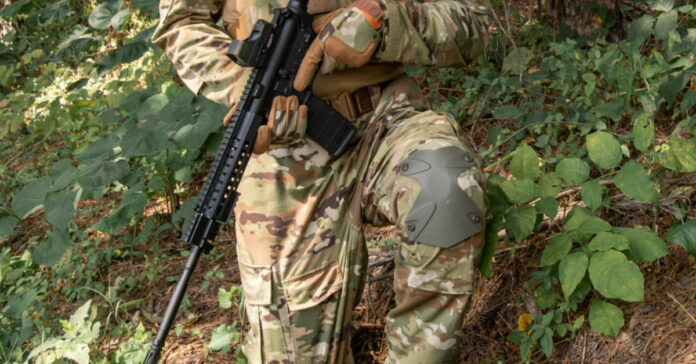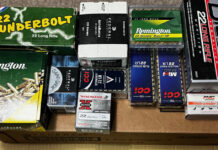Some people on social media say that Kyle Rittenhouse showed us that the AR-15 works for self-defense. I think it would have been more accurate to say it works for self-defense at close ranges in an urban combat scenario. In fact, I think the AR-15 shines in scenarios where the range in less than 150 yards. Go out to the plains states or the desert South West where the several hundred yards is considered close range, and its utility decreases.
Don’t get me wrong, I like the AR-15 and I own a few, but it still isn’t my favorite gun. It has many things going for it, including lightweight, easy handling, good ammo availability, and plenty of spare parts and accessories. It’s modular, easy to work on, and reliable as long as it’s kept clean. I just prefer my battle rifle to be a .30 caliber.
But is the AR-15 the perfect prepper gun? As much as I hate to admit it, it’s a good choice to add to your survival arsenal early on. Let’s look at why.
Low Cost
One of the biggest benefits the AR-15 offers to a new or inexperienced prepper is that you can buy two or three AR-15s for the price of a single M14, FAL or other .308 battle rifle. Yes, you can spend $1,800 or more on an AR-15, but you don’t have to. Magazines are also less expensive and more available than those for most other guns. Even during an ammo shortage, 5.56 rounds are cheaper to buy than .308. If you are on a budget, you can get a decent plain Jane, AR-15, six magazines, and 500 rounds of ammo for $1,000 or less. That’s hard to do with any other serious weapons platform, except for the AK-47.
Availability and Ubiquity
While AR-15s don’t grow on trees, they are usually available at any gun store, and most stores have anywhere from a few guns to several dozen in stock. Assuming you can pass the instant background check, you can go out this afternoon and come home with an AR. That’s harder to do if you want an H&K G3 or a CETME. Even AR-10s are harder to come by and will have less selection.
While the military still uses the AR-15’s brother, the M4, a majority of the parts and accessories are interchangeable. If you’ve been in the military any time in the past 50 years, you can pick up an AR-15 and feel right at home with the old manual of arms you learned in basic training. The majority of law enforcement agencies also used them. This contributes to the plethora of spare parts, upgrades, and accessories on the market that will work on your AR-15. From optics and mounting systems to magazine releases and ambidextrous safety levers, you can set your AR up exactly as you want it.
The use by the military also contributes to innovations and new developments for this platform. For example, I question whether anyone would have developed a 77 grain match bullet if the military didn’t need to make this a harder-hitting round at longer distances. And remember when rails didn’t exist? The quad rail was developed for the platform and the refined. The only reason you can buy FALs and M14s with rails today because of their success on the M4/AR-15.
Low Recoil
Because the 5.56 is a relatively small round, it has light recoil. This makes follow-up shots easy because the gun does not move off target much after the shot. That’s good, because shooting the target twice is a smart move when using a 55 grain .22 caliber bullet.
The primary advantage of low recoil is that the gun is easy to shoot and easy to control. Recoil is also more appropriate for small-statured individuals, including children. I am a certified firearms trainer, and I always start shooters with a .22LR so they do not develop a flinch. Once they get the basics down, the 5.56/.223 is a nice step up for those learning to use a carbine or rifle.
Another advantage of the size of the 5.56 cartridge is that you can fit lots of them in a magazine. The standard magazine today is 30 rounds. You can also find magazines that hold 40 and 60, and drum magazines that hold 100. (Note that some of these magazines make it difficult to go prone.) I would not want to be running around with a 100-round drum magazine on my weapon, but I can see the utility only for someone using it with a bipod in a barricaded defensive position.
Small, light cartridges are also easier to carry, and the guns that fire them are lighter. You can carry more 5.56 rounds than .308 rounds. You can also fit 900 rounds on stripper clips or 12 loaded 30-round magazines in a 50-caliber ammo can. That’s convenient if you decide to stash ammo in select locations. This allows you to have 90 round on your person and know that 360 more rounds in that foxhole or behind that rocky outcropping should you need them.
Is it Deadly Enough?
We now come to the big question: Is the 5.56 cartridge deadly enough to help preppers get the job done. I think that question is best looked at by looking at stopping power vs killing power at your intended range.
I am not alone in thinking that the 5.56 does not have the stopping power necessary to consistently end an assault with one shot. In fact, Rittenhouse fired multiple shots to stop his assailants. There are plenty of stories from soldiers in Afghanistan who shot Taliban with the 5.56, only to see them absorb the rounds and keep coming. This is where a .30 caliber weapon will have an advantage, especially beyond 300 yards.
At the low end, 30-caliber options include the .300 Black Out, which with 110 to 125 grain bullets represents an improvement. Its ballistics are similar to the 7.62×39 that is cambered in the AK-47. At the higher end, the .308 is an even bigger step up and a far more potent round.
Back in the 1800s and early 1900s, many bullet wounds that did not kill you immediately would kill you over time as infection set in. Antibiotics solved that problem. But how many attackers in a post-apocalyptic scenario will have access to modern medical services and antibiotics to patch them up? Very few. We are going to be back to the era where a hit by a .22 caliber bullet that doesn’t stop you today may kill you a day or a week later.
Will this make a difference to the desperate, hungry person raiding your retreat? Probably not. So shoot them until they go down and then make sure they don’t get back up. With AR-15, that may take more rounds than the AR10.
Long Distance
As I alluded above, the 5.56 round loses energy pretty quickly because of its lightweight. This does two things: It makes long-range shots more difficult because it is not as flat shooting as the .308, and it becomes less powerful over distance. Power affects expansion and tumbling, which makes the 5.56 more deadly. Power also allows the bullet to penetrate cover or armor, which fast-moving 30-caliber bullets do better at extended ranges.
Finally, the heavier bullets in .308 are less affected by crosswinds, making longer shots more accurate. So while it is possible for a good rifleman to engage a human-sized target at 600 yards with a 5.56 rifle, you will have a better hit probability when using a .308. While there are even better long-distance rounds, few semi-automatic battle rifles are chambered in them, and resupply will be almost impossible in the field.
Hunting
Can you kill a deer with the AR-15? Yes, but there are better choices. If it’s the only gun you have, go forth and hunt. Be careful with larger game. The 5.56 would not be my first choice for elk, moose, bear or anything larger than a deer.
The 62 grain steel penetrator round will punch quarter-inch hole through the deer rather than dropping it. If you are planning to hunt, it probably pays to stock some rounds loaded with hunting bullets.
Your Best Bet
If you are just starting out and need a survival gun, the AR-15 is a solid choice. But depending on your situation, it may not be the best choice. For more on this topic and details on building your survival armory, read A Surprising Answer to the Question: What’s the Best Survival Gun.








